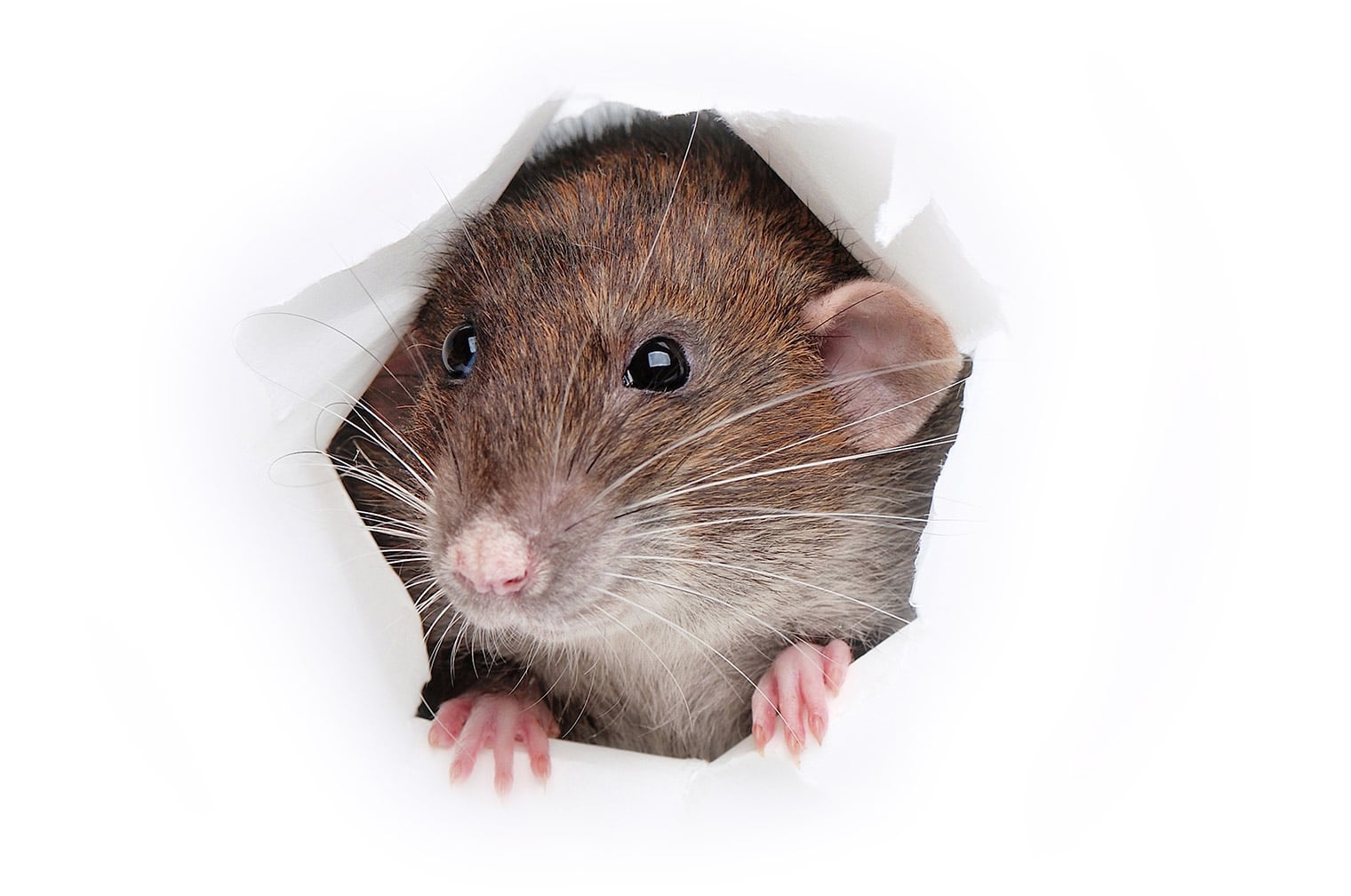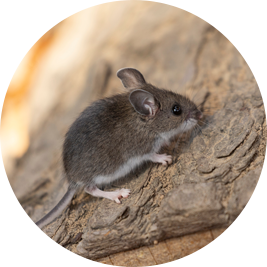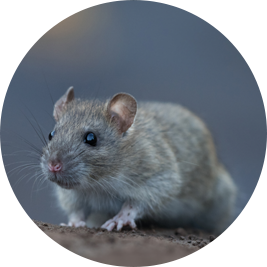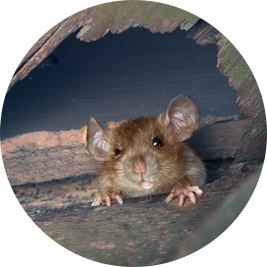Rodent Control
Columbus Ohio
How To Get Rid of Mice in Columbus, Ohio
Although mice are a popular household pet, they can also be a huge pest when they enter your home uninvited. Let the professionals at Champion Pest & Termite Control be your mouse infestation solution.
Mice are amongst the smallest of rodents, generally averaging half the size of a rat, but they can still do major damage to your home and put your family’s health at risk. The house mouse and the deer mouse are amongst the most common invaders in Central Ohio. It only takes a hole ¼ inch or larger to entice a mouse into your house and they can easily widen it, leaving teeth marks behind. Homes plagued by rats or mice are at a high risk of fire due to damaged wiring. Between 8% and 25% of house fires with unknown origins are suspected to be caused by rodents.
Our professional extermination team will complete a thorough inspection, initiate a full removal, and complete the disposal of all pests, as well as offer preventative solutions for the future. A mouse infestation damages your home and produces unsanitary eating conditions. Don’t risk your family’s health, request a quote from Champion Pest & Termite Control today to solve your mouse problem.

Got a Rodent Problem?
Get a Quote
DIY Isn’t Always The Answer!
Seeing live or dead rats in or around your home is the most direct sign of an infestation. You may see dirt or grease marks along floorboards or baseboards or find abandoned nests outside in your bushes, trees, or wood pile. A thorough inspection of your home would show multiple entry points and evidence of chewing damage. You will also begin seeing piles of droppings and hear scurrying or squeaking at night in the walls. Unfortunately, all of these signs mean you have a full-blown infestation and need the help of a professional exterminator.

Identify Your Rodents
Rats and mice are commonly misidentified by homeowners which can lead to ineffective DIY removal. Different traps are available, but they will only deal with an individual, not a whole colony. Rats are also smart creatures who tend to avoid unidentified objects placed in their paths. Cornered rats are aggressive and may bite or claw to avoid being captured. If you do trap a live rat, now you must find a way to either dispose of it or relocate it safely far away. All that work for a single rat while hundreds remain hidden in your walls, attic, or basement. Setting out bait is also not a good DIY solution. Poisons are slow acting, meaning rats could perish inside your walls, air ducts, or anywhere else they scurry after ingesting the bait. In addition, baits can be very harmful to kids and household pets.

Call the Professionals
It is difficult to eradicate mice with home remedies. Snap traps and glue traps come with a nasty disposal requirement and can be dangerous if small hands or pet paws decide the trap is a toy. Both these devices can seem unnecessarily cruel compared to removal methods used by professional exterminators. More humane, live traps require relocation of the mouse to a safe place. Any traps used are only intended to catch individuals, leaving the rest of the colony free to keep reproducing. Poisoned baits are another option, but these chemicals are unsafe for homeowners to handle and there is no way to control where the mouse might wander before it dies.

Make Your Home Rodent Free with Professional Pest Control Services
Our exterminators will work to remove the entire colony, minimize the damage caused, and help prevent further infestations. After effective removal, our team will identify and seal holes where rats were entering and perform a thorough inspection, cleaning, and disinfection of the area; leaving you a healthy, pest-free home once again. Don’t delay, contact the team at Champion Pest & Termite Control to rid yourself of rats for good!
A Health Risk That Hides
Due to their small size and ability to collapse their bodies, mice can enter your home through holes much smaller than you might imagine; an opening the diameter of a number 2 pencil is all it takes. They will also scale walls, climb tree branches, scurry over wires, wade through pipes, and chew their way in through window and door seals, exterior siding, or flooring and baseboards. Once inside, they will make nests in your walls where they remain until they come out to hunt for food at night.
It isn’t just the physical damage that you need to worry about. The saliva, droppings, and urine of mice can carry dangerous diseases such as salmonella and hantavirus (a severe, sometimes fatal, respiratory virus passed from rodents to humans). Because rodents can chew through cardboard and plastic containers with ease, food is best kept in glass jars or heavy-duty metal tins. There can be no compromises when it comes to your family’s safety, so any items that have evidence of tampering or are near mouse droppings should be discarded and the kitchen and pantry will need to be cleaned and disinfected.

Types of Rodents
Rats and mice rank just behind termites in causing the most extensive and expensive damage to buildings. They are indiscriminate chewers and will gnaw through support beams, floorboards, plastic, adobe, brick, cloth, wires, siding, pipes, insulation, ductwork, and even weakened concrete.

Deer Mice

House Mice

Norway Rat

Roof Rat
Rodent Control FAQs
What Will Keep Mice and Rats Away?
The best tips for keeping mice and rats away involve general cleanliness. Make sure your countertops and floors are clean, seal all of your dry foods, and be sure to close all your outside doors whenever you can.
